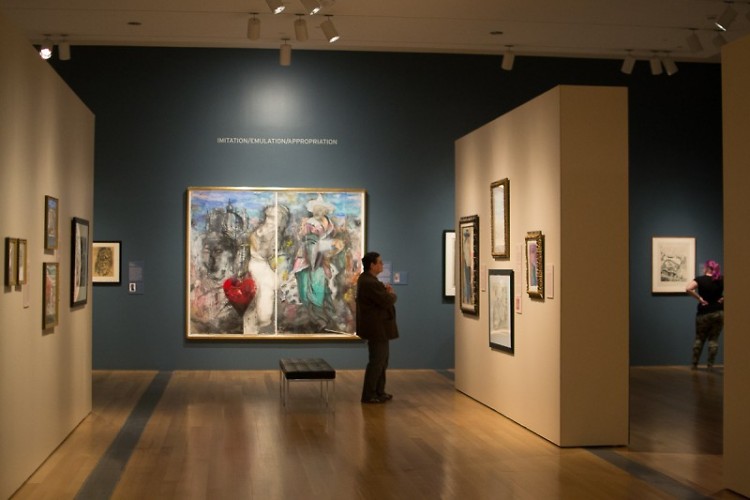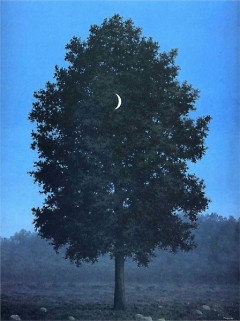The Grand Rapids Art Museum is located at 101 Monroe Center Street, NW. Grand Rapids. The Marks of Genius exhibition runs through January 18. Visit the GRAM website for more information.
To me looking at artists' drawings is like watching the special features on a DVD: it reveals the process. To look at a drawing is to peek behind the curtain. This particular collection of drawings comes to The Grand Rapids Art Museum from the Minneapolis Institute of Arts. It has a deep variety of works taking us from the 15th century up to the contemporary artists working today.
The exhibition has been cleverly organized around six themes: (1) the artist as observer, (2) a sense of place, (3) from imaginative spark to finished design, (5) imitation/emulation/appropriation, (6) abstraction: transcending experience. This arrangement reveals the many different ways that drawing functions for the artist- but also for the viewer, who is coming to the work looking for a deeper insight.
Spending time with this well thought out exhibition feels a lot like attending art school. There is also the possibility for making some unexpected connections between works that span six centuries. Perhaps that wish you have always had to time travel with The Doctor is waiting for you at this exhibition.
One of the drawings from the Artist as Observer category that stood out to me was the Reginald Marsh drawing "Coney Island Bathers." In this drawing we see a large group of swimmers have submerged in the water all in different positions of play. This was a theme Marsh would return to over and over where he is able to convey a strong sculptural quality to the figures, all woven together in a beautiful design that speaks of the compacted humanness and vitality unique to the urban experience. Although these people all share the same crowded section of ocean play area, they seem strangely disconnected from each other in a similar way we see with the characters that inhabit the paintings of Edward Hopper and the stories of Sherwood Anderson. The fluidity of his mark making and the fresh handling of ink washes makes this work a breathtaking experience that brings to mind the writhing figures that inhabit the ceiling of the Sistine Chapel.
From the Sense of Place group there is an exquisite little drawing by Rene Magritte that would be easy to walk right by. The work presents a large single tree with heavy foliage placed in the center of the picture. In the top center of the tree he has placed a crescent moon that should be eclipsed by the tree but we see the bright clip of moon clearly in front of this tree. This drawing is not compelling for its technique, which is customarily dry and exacting, but rather for the way the way the information presented confuses the brain and forces the construction of some new neural passages as it attempts to solve an insolvable visual riddle. Magritte's way of making the impossible possible provided a much needed link to spiritual real estate that had all but disappeared in the craters of two world wars.
Another drawing that touched me was an illustration of Little Red Riding Hood by Arthur Rackham. Like Magritte, Rackham is one of those artists that you are very accustomed to seeing reproduced in books and now online. To have the opportunity to be in front of the actual work is a rare treat that also drives home the fact that these pieces were made by real people blowing their nose, coming down late to dinner and bending over their fledgling works hours at a time. The heroin in this image has begun her conversation with her enemy and the deep woods looks like it is ready to swallow her whole as well. Seeing this children's book illustration in the context of an exhibition with some of the greatest samples of Western art reminds me of all the other treasures overlooked and hidden away in the nursery in between the forgotten pages of childhood.
One last mention is a beautiful if not clunky painting on paper by Philip Guston from the 50's. This piece is a good 20 years away from his heroic break from abstract expressionism into his late career cartoonish narrative figure paintings. Yet you can feel the breakthrough coming in this piece. I always come away with grace for my own clumsy stumbles towards truthful art making. Even though Guston grew up in California, he feels deeply Midwestern to me which makes this humble, easily over-looked entry in the Marks of Genius exhibition a good point of reference for me.
Although I appreciate how well thought out this show is, I find my self feeling somewhat conflicted. On the one hand I understand one of the important roles of any museum is education of the public, yet I feel that all the effort to help the visitors understand what is going on in the exhibition with the creation of six different categories (maybe three would have been enough) and the detailed information printed alongside each piece felt at times heavy handed and just too obvious. I suppose art historians and museum curators cannot resist creating categories and organizing information with the authority of doctors and lawyers. I personally recommend you go through this exhibit at least the first time ignoring all the printed helps and categories and take it in on your own. Afterward you can circle back a second or third time and read what you want without abandoning your original insights.
The Rapidian, a program of the 501(c)3 nonprofit Community Media Center, relies on the community’s support to help cover the cost of training reporters and publishing content.
We need your help.
If each of our readers and content creators who values this community platform help support its creation and maintenance, The Rapidian can continue to educate and facilitate a conversation around issues for years to come.
Please support The Rapidian and make a contribution today.

